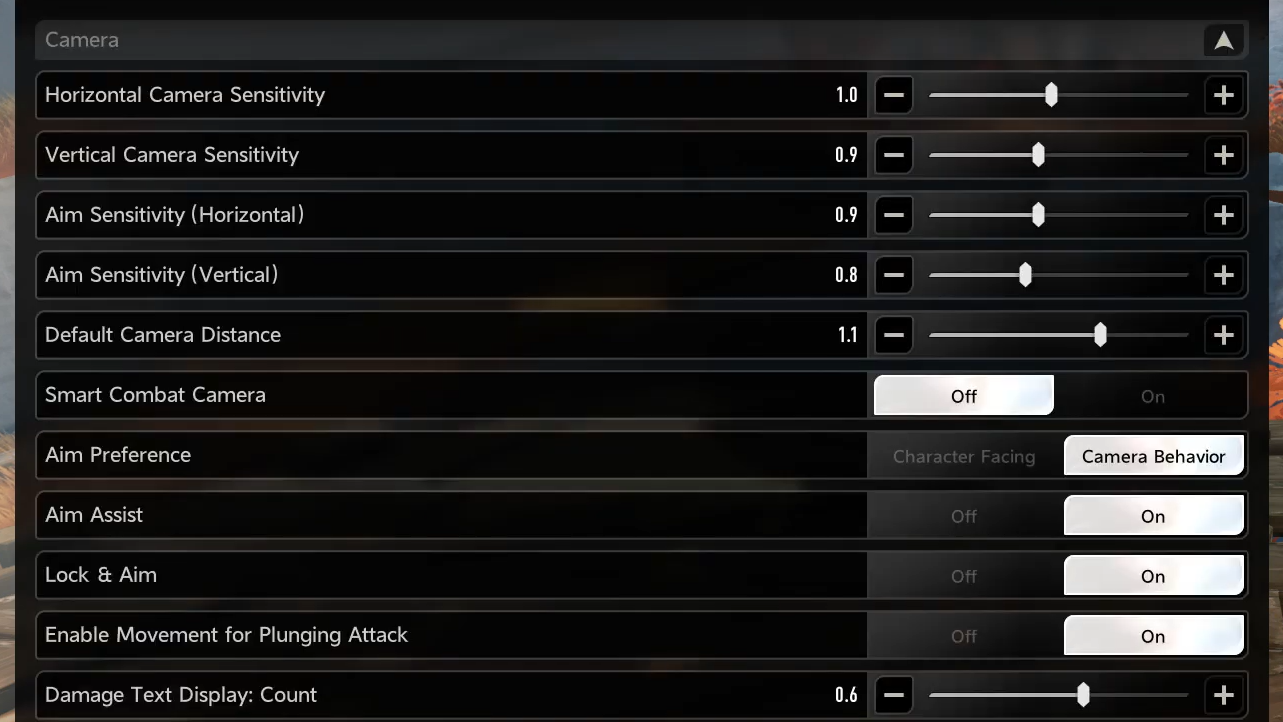Camera controls live inside the game’s settings. Open the main menu, select the gear icon at the bottom‑left of the sidebar, then go to Control Settings. This is where you’ll adjust camera sensitivity, distance, and related aim behavior.
Camera options that matter (and what they actually do)
| Setting (Control Settings) | What it changes | When to adjust |
|---|---|---|
| Horizontal Camera Sensitivity | Speed of left–right camera movement when you look around. | If you overshoot targets on turns, lower it; if you can’t track quickly, raise it. |
| Vertical Camera Sensitivity | Speed of up–down camera movement. | Set independently from horizontal to prevent laddering or over‑tilting during vertical fights. |
| Aim Sensitivity (Horizontal) | Left–right camera speed specifically while aiming. | Keep lower than general look speed for steadier shots. |
| Aim Sensitivity (Vertical) | Up–down speed while aiming. | Dial it down if your reticle climbs or drops off targets during precision fire. |
| Default Camera Distance | How far the camera sits from your character. | Increase for more situational awareness; decrease to read tight spaces and enemy tells up close. |
| Smart Combat Camera | Automated camera behavior that adapts during combat. | If the view feels jumpy or over‑assisted, turn it off. If you want auto‑framing in brawls, keep it on. |
| Aim Assist | Input correction toward targets while aiming. | Turn off for full manual control; leave on if you prefer slight stickiness while swapping between enemies. |
| Lock & Aim | Target locking behavior that can constrain camera movement. | Turn off for free look and cleaner tracking with flicks; enable if you need a persistent lock. |
| Damage Text Display: Count / Size | How many damage numbers appear and how large they render. | Reduce both to keep the camera view uncluttered in crowded fights. |

Set up a clean, readable play view
Visibility affects how the camera feels as much as pure sensitivity does. If the screen gets busy in co‑op or large encounters, reduce on‑screen elements that block the view of enemies and terrain.
| Setting | Change | Result |
|---|---|---|
| Teammate Effects (Display Settings) | Block Some | Cuts visual clutter from allied skills so the camera view stays readable. |
| Damage Text Display: Count / Size | Decrease | Fewer, smaller numbers means enemies stay visible while you pan the camera. |
| Always show enemy names / status icons | User preference | Helpful for target identification; disable if labels pull your eye away from movement. |

Practical baselines for PC
- Use separate horizontal and vertical values. If vertical recoil or vertical camera climbs are a problem, drop vertical a bit below horizontal.
- Lower both Aim Sensitivity sliders versus general look speed for steadier reticle control.
- Turn off Aim Assist and Lock & Aim if you prefer pure manual tracking and consistent camera behavior.
- Increase Default Camera Distance to spot adds and telegraphs earlier; decrease if you’re missing close‑range animation cues.
- Trim Damage Text count and size to keep sightlines clear.
Invert the camera (what you can and can’t do)
If an in‑game invert toggle isn’t listed in Control Settings, there are two common workarounds in Unreal Engine titles:
- Adjust the camera axis mapping so the vertical input scale is negative (inverts the Y axis).
- Swap axis mappings directly for the vertical look input.
Controller and mobile notes
- Controller: Keep general look sensitivity higher than Aim Sensitivity to avoid overshooting. If auto‑framing feels intrusive, disable Smart Combat Camera.
- Mobile: Use the Control Settings to reduce Aim Sensitivity for steadier swipes. If the camera struggles in busy scenes, raise Default Camera Distance and reduce Damage Text.
The right setup is the one that feels predictable. Start with modest look sensitivity, lower aim sensitivity, a slightly pulled‑back camera, and minimal on‑screen clutter. From there, nudge each slider until camera movement and target tracking feel automatic.


